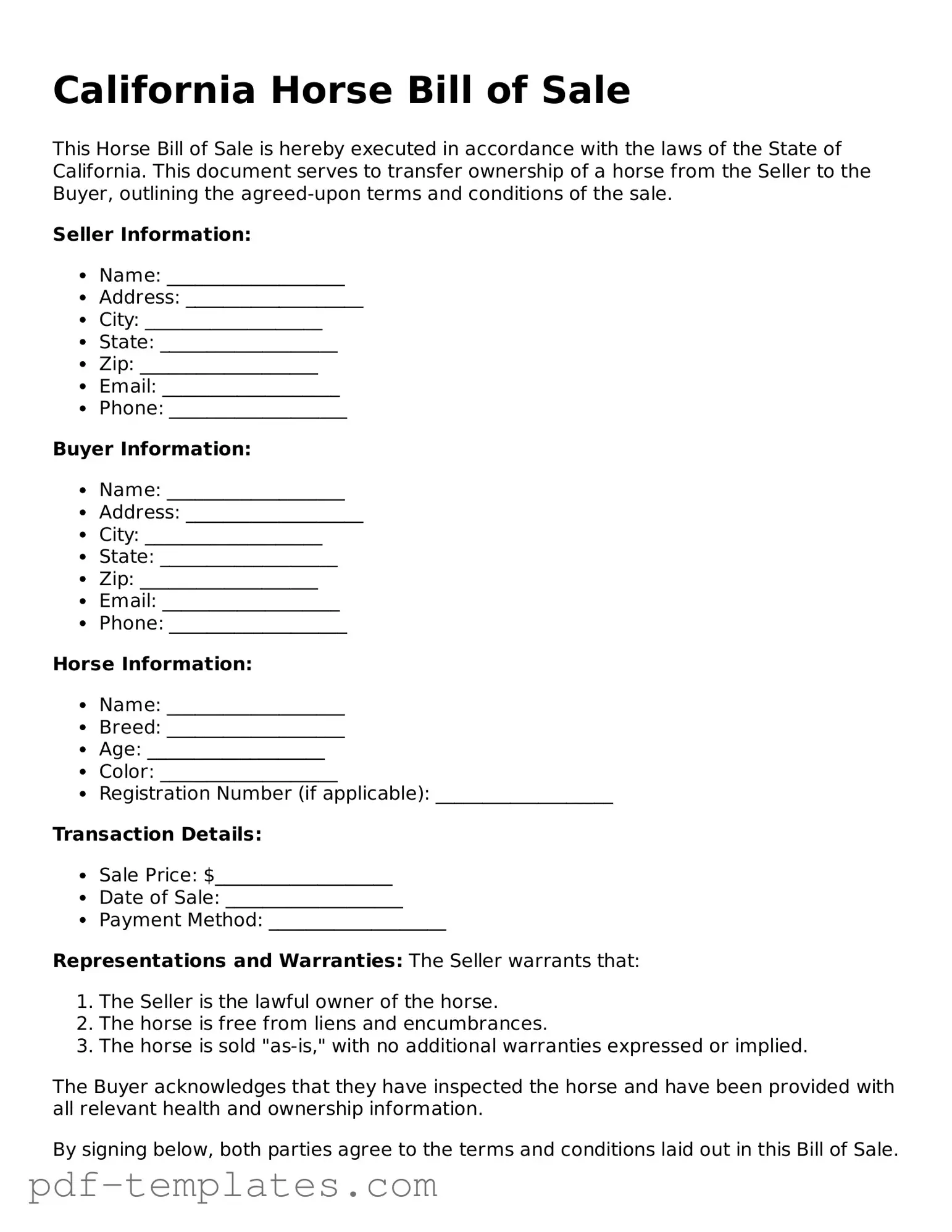The California Vehicle Bill of Sale serves a similar purpose to the Horse Bill of Sale. Both documents facilitate the transfer of ownership from one party to another. They provide essential information about the item being sold, including details about the seller, buyer, and the item itself. Just as the Horse Bill of Sale includes specifics about the horse, such as its breed and registration number, the Vehicle Bill of Sale outlines the vehicle's make, model, and VIN. This ensures that both parties have a clear record of the transaction.
The Boat Bill of Sale is another document that shares similarities with the Horse Bill of Sale. Both forms are used to document the sale of a recreational item, ensuring that ownership is legally transferred. They typically include information about the seller and buyer, as well as details about the boat, such as its hull identification number and any accessories included in the sale. This documentation protects both parties and provides proof of ownership.
A Pet Bill of Sale also mirrors the Horse Bill of Sale in its function. When someone sells a pet, it is important to have a formal record of the transaction. This document outlines the details of the sale, including the seller's and buyer's information, as well as specifics about the pet, such as breed and health records. Just like the Horse Bill of Sale, it serves to protect both parties by providing a clear understanding of the terms of the sale.
Understanding the importance of documentation in various transactions is crucial, whether it involves animals, vehicles, or property. The clarity provided by these forms helps to mitigate disputes and ensure both parties are protected. For those needing assistance with similar forms, the pdftemplates.info/adp-pay-stub-form is a valuable resource that can help streamline the process and ensure accuracy in financial records.
The Real Estate Purchase Agreement is another document that, while more complex, shares the fundamental goal of transferring ownership. Both documents outline the terms of a sale and include details about the parties involved. The Real Estate Purchase Agreement specifies the property being sold, while the Horse Bill of Sale includes details about the horse. Both documents aim to provide clarity and legal protection during the transfer of ownership.
The Equipment Bill of Sale, commonly used in agricultural and construction contexts, is similar to the Horse Bill of Sale in that it facilitates the transfer of ownership for equipment. Both documents include the seller's and buyer's information, along with detailed descriptions of the equipment being sold. This ensures that both parties have a clear understanding of what is being exchanged, reducing the risk of misunderstandings.
Finally, the Personal Property Bill of Sale is another document that aligns with the Horse Bill of Sale. This form is used for the sale of various personal items, including horses. Both documents serve to confirm the transfer of ownership and provide necessary details about the item being sold. They protect the interests of both the seller and buyer, ensuring that the transaction is documented and legally binding.
